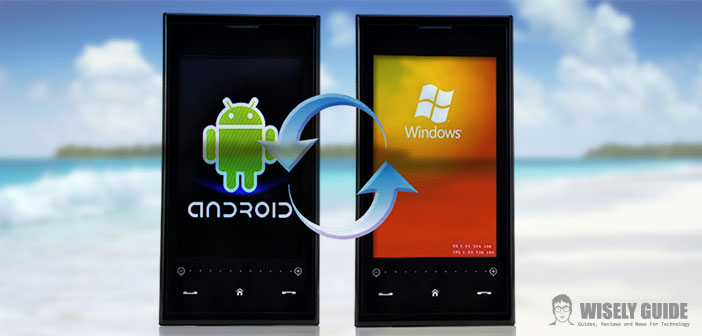Windows Phone and Android we know them well: each has its own peculiarities and strengths, but also weaknesses. What does it mean and what does pass from one to another?
Those who know me on this site will know that my main field of action has always been Windows Phone. Using this OS now for more than two years since the launch of the very first Lumia 800 with on-board version 7.5 Mango.
I’ve seen it evolve and spread seriously in Italy (up to achieve significant market shares), slowly covering the gap with the other platforms at the level of applications and services available.
Last week, I purchased an LG G2, top of the range Android. It is not going to completely replace my trusty Lumia 820, but it gives me the opportunity to allow me to deal with more subjects and stay up to date in the fast-paced world of technology. But what does it mean in practice to upgrade from Windows Phone to Android?
Apps for everyone, but give me back the tiles.
The first thing I did was turning on the LG G2 open the Play Store: million applications available to me. at my disposal, in their official versions. Finally, a client with free streaming Spotify, the latest versions of Facebook and Twitter with all their functionalities, the most famous games that unfortunately, more often than not just affect the mobile OS from Microsoft.
Not only, that, I can finally use the full Google services: the official Youtube app, Hangout and GMail (workmates essential), Play Music Maps and above, where for years I kept a note of places see or visiting.
But there is a but. In all this welter of applications, I remembered a flaw of Android fragmentation. I am not referring to those who assemble Android 4.2 when it is available for other KitKat: I speak of the style and feel of the app, often a mishmash between the HALO, consistent with the theme of the recent versions of the OS by Google, and those still with interface element’s earlier versions such as Gingerbread, unpleasant and decidedly low resolution.
I thought it was a problem of the past, but apparently not all developers have started to follow what Google itself shows how to draw their own app, and this is a real shame considering the screens more and more adamant that we find on the Android device.
This happens a lot less on Windows Phone: its a great feature is the ability to create beautiful app without too much effort, simply by following the guidelines created by Microsoft. The minimal often wins, resulting in cleaner and more efficient.
It’s not all that glitters is gold, though: even the unmistakable style of WP is slowly losing, since many users prefer to have apps that are identical between the various platforms, see the Facebook client that no longer views down the side in favor of a resumption UI verbatim from Android and iOS.
And then there are the tiles. There is no launcher for Android that can withstand, but to me the homescreen of Windows Phone 8 like it because, like good design is functional. The big squared animated convey the right amount of information at a glance, and launch an app is a matter of a second from the side. Even the simple lock screen fails to say what they really need: the next event calendar, notifications from the five favorite apps, the time and the song.
I do not reject the ability to customize your Android phone offering. It is not just put different icons or animated backgrounds: they are changing the paradigms of operation of the operating system to suit your needs.
Just think about the fact that there is an app like Tasker: with it, you can create automatic profiles that allow the device, for example, to disable 3G when you are connected to Wi-Fi network at home, or to put the silent when in college or turn off Google Maps all incoming notifications if you put at the helm. You know AirDroid, which makes us fully interact with your phone using the browser to manage files, send messages and install the app. Enormous flexibility that no other OS on the phone. It is currently.
The technological race is endless.
Lights and shadows on both operating systems. On the one hand, the closure of Windows Phone allows, as on iOS, to find the right balance between performance always high, selection of apps and interface. The grand opening of Android let’s not get cut off more often from the app and services that do not arrive on WP, and also allows you to have a device with hardware driven and peculiar.
Sure, Nokia offers us a phone with 41 MP camera, and no one would dream of saying that the Lumia 1020 is not innovative (even shooting in RAW!). But simple things such as faster processors and larger amounts of RAM, capable of making us surf the web easily and enjoy the latest video games, or FullHD screens within everyone’s reach and support the most extravagant accessories. Windows Phone currently does not offer them with the same timing of the competition.


